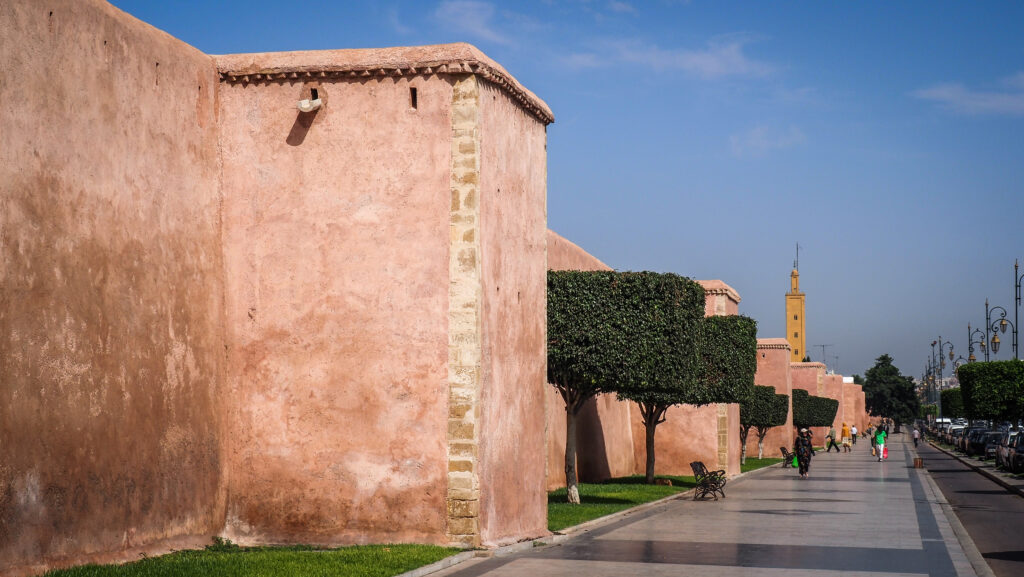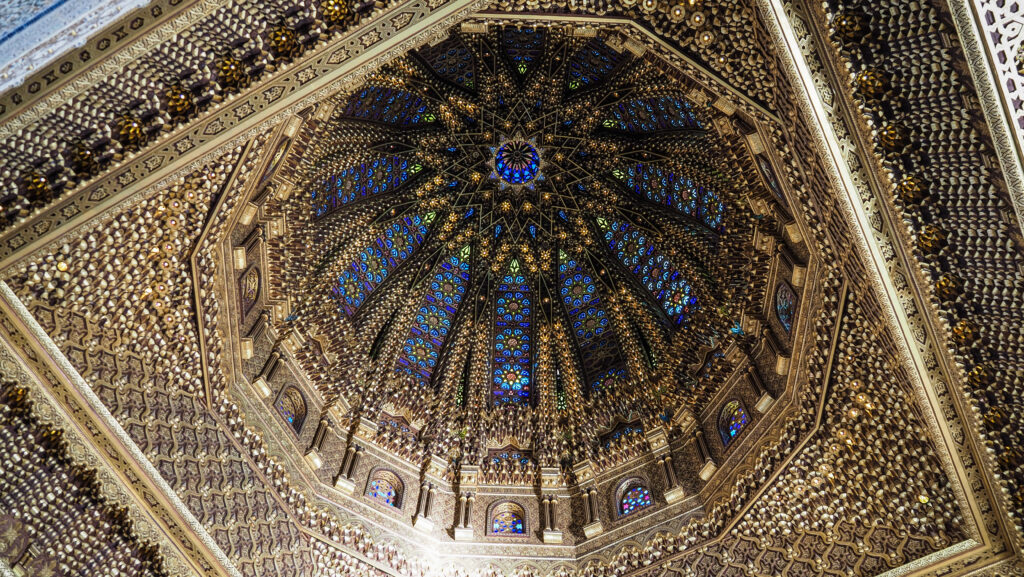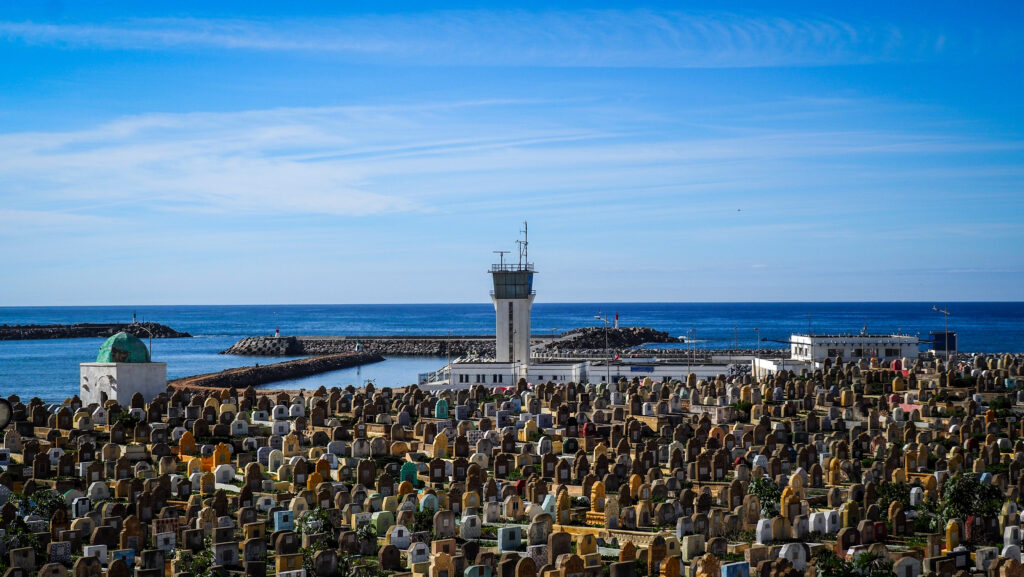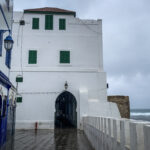Rabat, the capital city of Morocco, boasts a fascinating history that spans thousands of years. Situated on the Atlantic coast at the mouth of the Bou Regreg River, it has evolved from a modest settlement to a political and cultural hub. Rabat’s story intertwines with the rise and fall of empires, the spread of Islamic civilization, and the colonial period, all of which have left their mark on the city’s character and architecture.
The origins of Rabat can be traced to ancient times when the Phoenicians and Carthaginians used the region as a trading post. The area later came under Roman control and became part of the province of Mauretania Tingitana. During this era, a settlement called Sala Colonia flourished near present-day Rabat, with remnants of this Roman city still visible at the Chellah archaeological site.
Rabat began to take shape as a major city during the 12th century under the Almohad dynasty. Sultan Abd al-Mu’min established a military fortification known as Ribat al-Fath (“fortress of victory”) to protect against invaders and serve as a base for military campaigns in Andalusia. His successor, Sultan Yaqub al-Mansur, envisioned Rabat as a grand imperial capital. He began constructing monumental structures, including the Hassan Tower and an immense mosque. Although the mosque was never completed after his death, the Hassan Tower remains a defining symbol of the city.

After the Almohad dynasty, Rabat experienced periods of decline until the 17th century, when it became a haven for pirates. The Republic of Bou Regreg was established by a coalition of corsairs who controlled the area and launched raids on European ships. This semi-autonomous republic brought wealth and notoriety to Rabat and neighbouring Salé, though its dominance declined over the following century.
In the 18th and 19th centuries, Rabat became part of the Alaouite dynasty’s realm, but it remained relatively quiet compared to other Moroccan cities. This changed during the French colonial period in the early 20th century. In 1912, France established a protectorate over Morocco and chose Rabat as the administrative capital. Under the leadership of French architect Henri Prost, the city underwent significant modernization, with the creation of a European-style administrative district alongside its historic medina.
When Morocco gained independence in 1956, Rabat retained its status as the capital. Since then, it has served as the political and administrative centre of the country, home to royal palaces, government institutions, and embassies.
In 2012, Rabat was designated a UNESCO World Heritage Site for its unique blend of historic and modern features. The city showcases a harmonious integration of its Islamic heritage, colonial-era planning, and contemporary urban development. Key landmarks like the Kasbah of the Udayas, the Chellah necropolis, and the Hassan Tower illustrate Rabat’s rich historical layers.
How to get there?
By Air
Rabat-Salé International Airport (RBA): Located about 8 km northeast of the city centre, this airport serves domestic and international flights, with connections to Europe, the Middle East, and some African cities.
You can take a taxi, shuttle bus, or hire a car from the airport to reach the city centre. Taxis are the most common option and typically take 20–30 minutes.
If Rabat’s airport doesn’t suit your itinerary, you can fly into Casablanca’s Mohammed V International Airport (approximately 1.5–2 hours away) and take a train or taxi to Rabat.
By Train
Morocco’s modern railway system, operated by ONCF, connects Rabat to major cities like Casablanca, Tangier, Fes, and Marrakech.
Rabat has two main train stations:
Rabat Ville Station: Centrally located and ideal for visitors staying in the city centre.
Rabat Agdal Station: Another major station, often used for high-speed trains (Al Boraq).
The high-speed Al Boraq train from Tangier to Casablanca stops in Rabat and offers a comfortable and efficient way to travel. For other routes, regular trains are available and run frequently.

By Car
Rabat is accessible via Morocco’s extensive highway network. Major routes include:
A1 Highway: Connecting Rabat to Casablanca and Tangier.
A2 Highway: Linking Rabat to Fes and Meknes.
Driving is straightforward, and car rentals are available at airports or in major cities.
By Bus
Several long-distance bus companies, such as CTM and Supratours, connect Rabat to other cities in Morocco. The buses are affordable, reliable, and offer comfortable services for intercity travel.
How to get around Rabat?
If you’re visiting Rabat, combining walking, the tram, and petit taxis will give you the easiest and most cost-effective way to explore the city. This mix allows you to enjoy the medina and landmarks at a leisurely pace while having quick transport options for longer distances.
The best time to visit
Spring (March to May)
Temperatures are moderate, ranging from 18°C to 25°C. The landscapes are lush and green due to the previous winter rains. It’s a perfect time for outdoor activities, strolling through the medina, or enjoying the beaches. It’s less crowded than summer.
Autumn (September to November)
Similar to spring, with temperatures between 20°C and 27°C. The sea is still warm enough for swimming after the summer heat. Quieter than in summer, with fewer tourists, and the weather is comfortable for sightseeing.

Summer (June to August)
Hot and sunny, with temperatures often reaching 30°C to 35°C. Coastal breezes help keep the heat manageable. Best time for beachgoers, as the beaches are lively and the water is warm. However, it can be crowded, especially with local and international tourists.
Winter (December to February)
Cooler but mild, with temperatures between 10°C and 18°C. Occasional rain is possible. Ideal period for a peaceful visit, as the city is less busy. While beach activities may be limited, it’s a great time to explore cultural and historical attractions.
For the best balance of pleasant weather and fewer crowds, spring or autumn is highly recommended.
Where to stay?
During my two visits to town, I stayed in two different places, both of which I can recommend. The first one was “Appartement ideal pour decouvrir la Ville“. Spacious, well-equipped place, ideal for families and within walking distance to the tram. It’s located outside of the medina in a more modern area.
Another place was Dar Ayoub, located inside the medina. I got a private room with a shared bathroom and everything was fine. Very clean place with a super friendly owner.
What to see in Rabat?
Kasbah of the Udayas
Historic fortress and one of the most iconic landmarks in Rabat. It is situated at the mouth of the Bou Regreg River, overlooking the Atlantic Ocean. This kasbah, which combines defensive and residential features, dates back to the 12th century and has a rich history tied to the Almoravid, Almohad, and Andalusian cultures.
Originally, it was founded by the Almoravids as a defensive military base in the 12th century. The Almohads fortified the kasbah and expanded it, building the famous gate, Bab Oudaia, and adding other key structures. Later, during the 17th century, the kasbah became home to Andalusian Muslims expelled from Spain, leaving a distinct architectural and cultural imprint.




The residential area is known for its narrow streets and traditional white-and-blue painted houses, reminiscent of Andalusian villages. You should have a look at Bab Oudaia which is a grand entrance gate and architectural masterpiece of the Almohad period, featuring intricate carvings and designs.
On the northern end, there is a fantastic viewpoint of the Bou Regreg River, the Atlantic Ocean, and the city of Sale.
If you need a moment of rest, relax in the Andalusian Gardens. A serene and beautifully landscaped place located within the kasbah, featuring lush vegetation and a tranquil atmosphere. The gardens are free to visit but you will have to buy a ticket to visit the fantastic National Museum of Jewelry & Adornment. Each piece of jewellery, ornament, and traditional attire in this magnificent museum tells a different tale about the various areas and historical eras of the nation.
Rabat Beach
The sand is nice and overall swimming at this beach is a positive experience. You can also take some surfing classes if you wish to. On the other hand, you may spot some garbage around which is a shame, but unfortunately somehow standard in Morocco.
Corniche
Pleasant place for a longer walk with street food, cafes, henna tattoos, and lots of activities for children. The area comes to life, especially in the evening, when locals drop by.
Medina
The Medina of Rabat is the old walled city and a vibrant market. Unlike the medinas in Marrakech or Fes, Rabat’s medina is quieter and less chaotic. Some may like it, some may not 🙂
The medina dates back to the 17th century when it was expanded to accommodate Muslim refugees from Andalusia, following their expulsion from Spain. Therefore, its architecture and layout reflect a blend of Andalusian, Moorish, and traditional Moroccan influences. In 2012, the Medina of Rabat was designated a UNESCO World Heritage Site as part of Rabat’s historic cityscape.
The medina’s narrow streets are lined with bustling souks selling a wide variety of goods, including textiles, carpets, leather goods, handcrafted pottery, jewellery, metalwork, spices, fresh produce, and local delicacies.


Rue des Consuls is one of the most famous streets in the medina, it is known for its artisanal shops and traditional handicrafts. Historically, this street was where foreign diplomats (consuls) lived during colonial times. You can enter the street directly through Bab Mellah.
If you turn left into Rue Souika, you will soon pass by the Grand Mosque, which is worth looking at.
National Photography Museum
It’s a beautiful place within the repurposed 19th-century Burj Kebir Fortress, a bit further away from the city centre. The fort is magnificent, and the location on the coast adds some magic to the scenery. As for the museum, you won’t need a lot of time to see all the exhibitions. In my opinion, it’s a bit too small to call it a “national” museum. However, it still deserves a visit.

Hassan Tower and Mausoleum of Mohammed V
The Hassan Tower, an incomplete minaret, dates back to the late 12th century and was part of an ambitious project initiated by Sultan Yacoub al-Mansour to create the largest mosque in the world. Although construction stopped after the Sultan’s death, the tower stands as a symbol of his vision. Its intricate red sandstone design and surrounding columns offer a glimpse into the grandeur that was planned for the mosque.
Nearby is the Mausoleum of Mohammed V, a stunning architectural masterpiece completed in the mid-20th century. It serves as the final resting place for King Mohammed V, along with his sons, King Hassan II and Prince Abdallah. The structure combines traditional Moroccan and Islamic styles, featuring ornate zellige tilework, a green-tiled roof, and marble interiors. Guards in traditional attire add to the ceremonial atmosphere.




St. Peter’s Cathedral
Construction of the cathedral began in 1919, and its chief architect was Adrien Laforgue. The inauguration took place in 1921. The two towers were added in the 1930s.
Museum of Modern & Contemporary Art
This institution launched in 2014 after being planned and financed by the current monarch. Referred to as the nation’s first national museum of modern and contemporary art. It includes a permanent exhibition of Moroccan artwork from the 1950s to the present, as well as some temporary exhibitions. If you are into modern art, this museum is definitely for you. You won’t spend there too long time but it will be a time well spent nevertheless.
Bank Al Maghrib Museum
The Museum’s extensive numismatic and artistic collection spans several centuries of the kingdom’s history. Over 30,000 coins, artefacts, monetary instruments, and banknotes are on display, providing a chronological overview of Moroccan coins and notes from antiquity to the present.
There is also a small exhibit of paintings, including modern and abstract art.
Museum of History and Civilizations
The archaeological museum is divided into two sections: the first covers Morocco’s history over the ages, while the second concentrates on its amazing collection of ceramics, statues, and other artefacts from the Roman settlements at Volubilis, Lixus, and Chellah.
Villa des Arts
In addition to cultural activities, this exquisitely restored, dazzlingly white art deco mansion from 1929 currently hosts contemporary art exhibitions that highlight Moroccan artists, culture, and tradition. Its garden cafe is a wonderful place to chill.
Bab Rouah Gate
A monumental gate in the Almohad-era ramparts. Currently, the gate’s interior has been converted into a small art gallery.
Royal Palace
The Moroccan king’s principal and official palace.
Since the 18th century, when Sultan Mohammed ben Abdallah used Rabat as one of his imperial residences and restored royal palaces in other towns, the ‘Alawi sultans and kings have had a palace in town. Mohammed IV replaced the previous palace in 1864 with the present one.
The colonial government intended the sultan to be mostly based in one location, close to their administrative headquarters, to demonstrate his support for the new government when the majority of Morocco was placed under French rule in 1912. When independence was proclaimed in 1955, kings had a variety of palaces at their disposal, but they decided to maintain the palace as the monarch’s principal residence.
Unfortunately, the interior is off-limits to tourists and you may only see the building, or rather the gate leading to it from the outside.
Chellah
A fascinating historical and archaeological site that reflects the layers of Morocco’s rich past. Located on the outskirts of the city, it was originally established as a Phoenician and later Roman settlement known as Sala Colonia. Over time, the site evolved and became a fortified Islamic necropolis in the 14th century under the rule of the Marinid dynasty.
Today, the Chellah is a blend of Roman ruins and medieval Islamic structures, featuring remnants of ancient baths, a forum, and tombs. Visitors can also explore the crumbling walls of a mosque and a minaret adorned with stork nests, as the site has become a haven for these birds.
On the day of my visit (November 2023) the place was closed to visitors but I was quickly approached by a “guide” who offered to take me in. I calmly refused and walked around the walls by myself. If you decide to use the guide’s service, make sure you negotiate the price BEFORE the start of the tour.



Museum of the Prophet’s Biography and Islamic Civilization
This place aims to introduce the prophet’s biography, his great manners, his noble morals, and his flexible teachings, in a distinct scientific and research-based approach, using the latest technologies, and the most advanced and creative presentation tools. Upon arrival, an English-speaking guide was assigned me to and took me around the exhibition in about an hour. It was quite interesting even for a non-Muslim person like me.
It’s located far away from the city centre but you can use public transportation such as tram or bus and then walk or take a taxi.
A trip to Sale
The city holds a rich history dating back to the 11th century when it was founded by the Berbers of the Almoravid dynasty. Positioned on the Atlantic coast and across the Bouregreg River from Rabat, Sale has historically served as a strategic port city, deeply tied to maritime trade, religious scholarship, and later, piracy.
In the medieval period, Salé gained prominence under the Almohad and Marinid dynasties. The construction of grand structures like the Great Mosque in 1196 and the Madrasa Merinide, an Islamic theological school, cemented its importance as a religious and intellectual centre. During the 17th century, the city became a renowned stronghold for the infamous Corsairs, who established the independent Republic of Sale. This short-lived pirate republic was known for its raids on European ships and settlements, making Sale a wealthy, albeit controversial, maritime power.
The Great Mosque, one of the largest and oldest in Morocco, remains a focal point of the city. The Bab Lamrissa, Bab Sebta or Bab Chaafa, are reminders of the fortified city walls that once protected Sale. Another key site is the Marinid necropolis of Chellah, closely associated with Marinid rulers.
The Medina is a vibrant example of Moroccan urban life, with its maze of narrow streets, traditional souks, and artisanal shops. The city’s Kasbah and Andalusian quarter offer glimpses of Andalusian refugees’ influence, who fled Spain during the Reconquista and settled here.
Near the Great Mosque and Medersa Merinide, there is also the Mausoleum of Sidi Abdellah Benhassoun. This Sufi scholar and cleric from the 16th century is the patron saint of Sale. Moroccan Muslims hold him in high regard as a patron of travellers, much like Catholics do with St. Christopher.
Every year on the evening of the Prophet’s birthday, a candlelit procession and pilgrimage in his honour travels through the streets of Sale and ends at this shrine beside the Grand Mosque, which is solely open to Muslims.
Follow Av. Abdelkader Al Harrati to reach Borj Adoumoue (Bastion of Tears). It is a stronghold built in 1261 by the Marinid Sultan Abu Yusuf Yaqub ben Abd al-Haqq. The structure was once known as Borj Adoumoue but the alternative name is linked to the painful memories when ships from Castile anchored in front of Sale in 1260. Soon after, the Castilian warriors landed and launched an unexpected attack on the locals, who were occupied with the Aid al-Fitr feast. The attackers got in via the Borj’s present location. They carried out a horrific slaughter in which many people from Sale died. Three thousand women, children, and elderly people were carried as slaves to Seville. Consequently, after this troubling period in the town’s history, Sultan Yacoub Ben Abdelhaq commanded the building of a massive wall and had a fortified bastion built on the beach which he sadly named the Bastion of Tears or Bastion of Sobs.
Don’t forget to stop at the Sale Beach which is on the west of the medina, on the north side of the Bouregreg rivermouth. Mostly Moroccan families and children playing football, with very few foreigners.
Sale is easily accessible by tram and all sights inside the medina are within walking distance.





